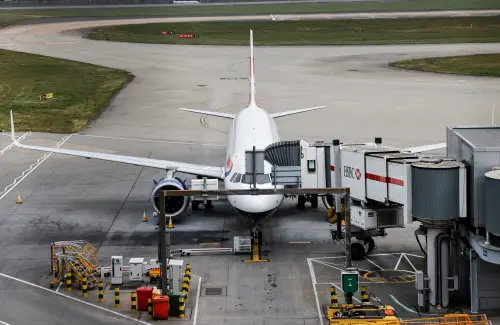The closure of Britain's Heathrow Airport is expected to disrupt the global aviation system for several days, costing tens of millions of dollars. This incident has raised concerns about the lack of effective contingency planning at the country's fifth-largest airport.
Experts expressed shock at the extent of the disruption, which is the largest since the 2010 Icelandic ash cloud, as they assessed the financial impact and ramifications of a fire that knocked out both the airport's primary and backup power sources.
Willie Walsh, head of the International Air Transport Association (IATA) and a former CEO of British Airways, described the situation as a clear failure in planning for the airport. Heathrow is the busiest airport in Europe in terms of aircraft capacity or the total number of seats flying in and out daily, as reported by OAG. On the day of the incident, all of the 1,332 flights scheduled were initially canceled.
The fire, which broke out just after 23:00 GMT, had a cascading effect across airports in Britain and Europe, forcing many long-haul flights to return to their points of departure. This incident occurred less than a year after Heathrow had communicated to the UK Civil Aviation Authority that it was "a leader in airfield resilience." However, several experts identified potential weaknesses in its backup plans.
Travel consultant Paul Charles estimated that the airport's closure could cost the aviation sector around £20 million ($26 million) daily. While Heathrow indicated that a limited number of flights would be available the following day, primarily for relocating aircraft, analysts warned that the knock-on effects would likely persist for days.
Charles emphasized the airport's significance, stating that its infrastructure should include fail-safe systems. Tony Cox, an international risk management consultant, noted the rarity of a critical infrastructure failure lasting an entire day due to a fire.
The situation also highlighted vulnerabilities in critical infrastructure when security concerns are at the forefront of European priorities. British police reported that counter-terrorism officers were investigating the fire, but no initial signs of foul play were discovered.
Energy Minister Ed Miliband stated that the fire had disabled backup power, and engineers were working to implement a third power source. Like most large airports, Heathrow has an operational resilience plan designed to identify and mitigate risks to its operations. It is unclear whether the unit involved in the fire had been previously identified as a vulnerability. The airport is also equipped with emergency generators and uninterruptible supplies for critical systems.
In 2023, Heathrow completed a new energy strategy that committed to increasing renewable energy while ensuring the resilience of its energy network. The Civil Aviation Authority (CAA) has stated that its regulations mandate Heathrow to maintain a resilience plan and coordinate with others to manage disruptions.
A spokesperson for the CAA mentioned that lessons would be learned from this incident. Heathrow has yet to respond to inquiries regarding its contingency planning.
The airport's closure is anticipated to have global ramifications, leaving many passengers stranded as airlines adjust their networks to reposition planes and crews. British Airways has previously warned that the overstretched nature of Heathrow can exacerbate chaos when disruptions occur, as aircraft and staff must be properly realigned while operations continue at full capacity.
Aviation consultant John Strickland noted that the fallout could extend over several days, as grounded aircraft are unable to move until they are repositioned with their crews.
With Britain's airspace among the busiest in Europe, technical outages have been a concern in the past. For example, an outage of the UK air traffic control system, NATS, in 2023 resulted in losses exceeding £100 million, according to CAA reports.
The incident at Heathrow has brought attention to contingency planning at other global airports. Christina Cassotis, CEO of Pittsburgh International Airport, highlighted how the airport's microgrid enabled it to function effectively during previous fires at two separate substations.
Tim Green, head of the electrical and electronic engineering department at Imperial College, London, experienced his UK-bound flight returning to North Carolina on account of the closure. He described the complexity of the power systems supporting Heathrow, which consumed 271,080 MWh of grid electricity in 2023, according to its annual report.
Green explained that the airport must provide power to various facilities including shops, restaurants, public areas, and emergency lighting, while a distinct electrical supply supports safety systems such as radar, navigation, and landing lights. He noted that some systems are backed by emergency generators but concluded that the airport would likely prefer to halt certain operations rather than risk accepting more aircraft in a compromised state.
